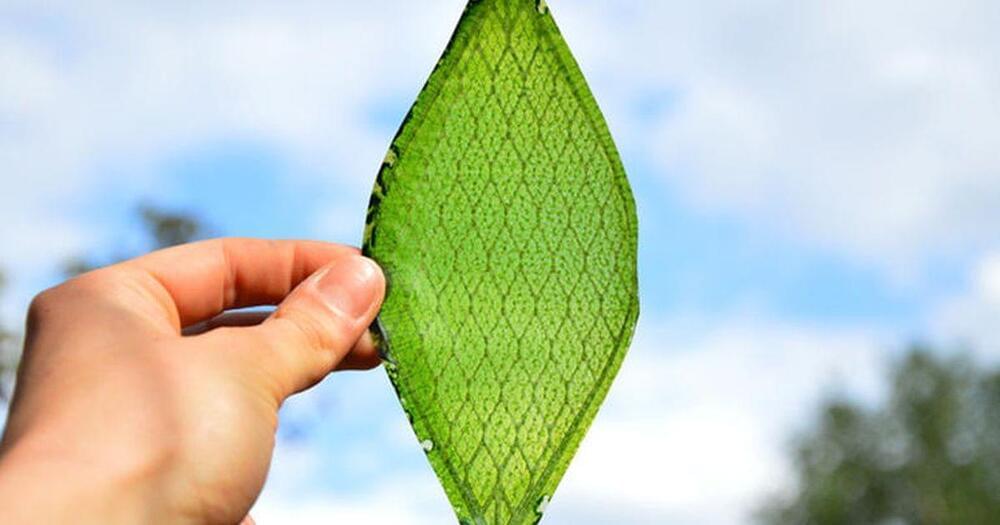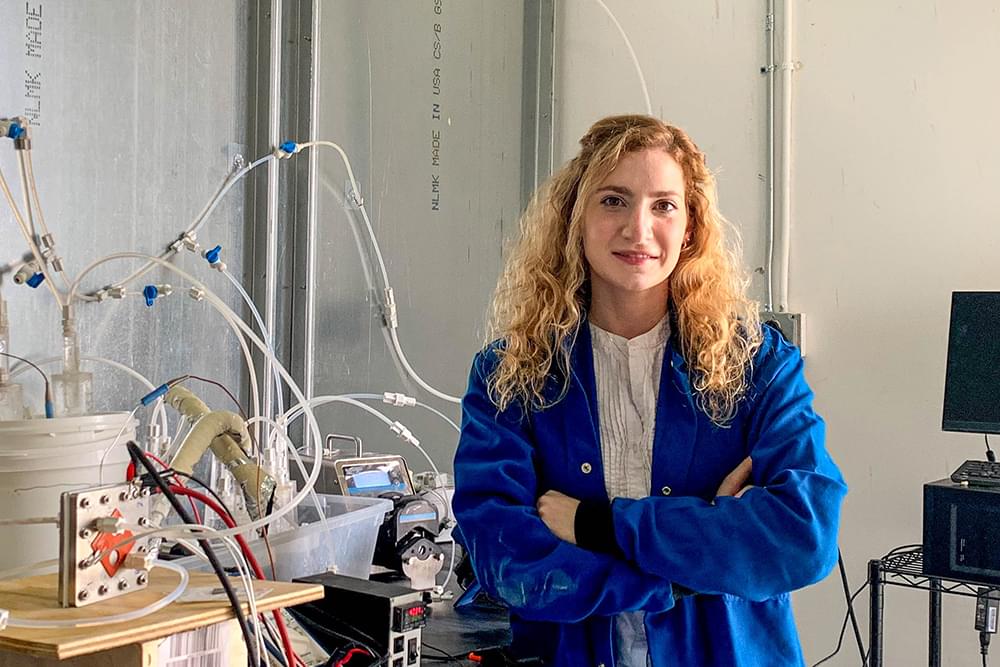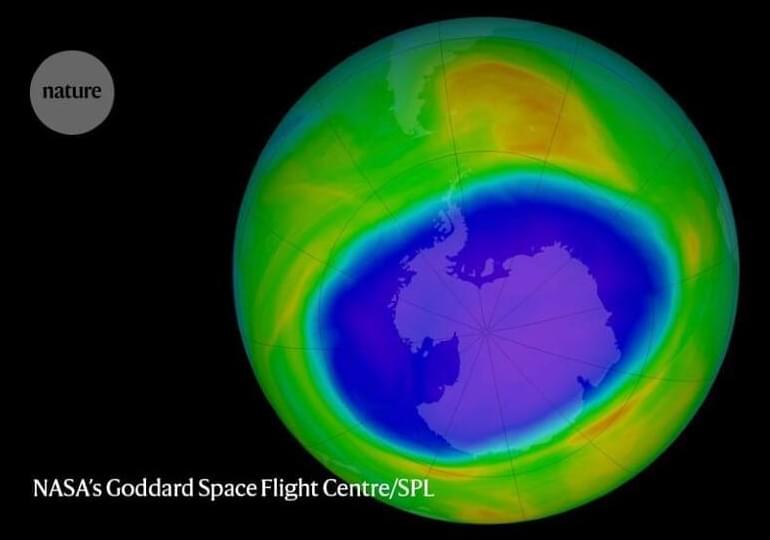NASA is getting out LEO — and letting private companies take its place.
NASA recently announced conctracts for three new space stations, all of them designed and built by private space companies. NASA is getting out LEO.



“If we’re going to use scrap aluminum for hydrogen generation in a practical application, we need to be able to better predict what hydrogen generation characteristics we’re going to observe from the aluminum-water reaction,” says Laureen Meroueh PhD ’20, who earned her doctorate in mechanical engineering.
Since the fundamental steps in the reaction aren’t well understood, it’s been hard to predict the rate and volume at which hydrogen forms from scrap aluminum, which can contain varying types and concentrations of alloying elements. So Hart, Meroueh, and Thomas W. Eagar, a professor of materials engineering and engineering management in the MIT Department of Materials Science and Engineering, decided to examine — in a systematic fashion — the impacts of those alloying elements on the aluminum-water reaction and on a promising technique for preventing the formation of the interfering oxide layer.
To prepare, they had experts at Novelis Inc. fabricate samples of pure aluminum and of specific aluminum alloys made of commercially pure aluminum combined with either 0.6 percent silicon (by weight), 1 percent magnesium, or both — compositions that are typical of scrap aluminum from a variety of sources. Using those samples, the MIT researchers performed a series of tests to explore different aspects of the aluminum-water reaction.


As Russia ramps up preparations for a possible assault on Ukraine, President Biden has ruled out sending U.S. troops, but an invasion would still face serious resistance and Ukraine’s defense minister promising a ‘bloody massacre’ if Russia invades. While Ukraine is heavily outmatched by Russian forces, the threat of heavy casualties is one which Russian cannot ignore. This is why uncrewed systems – remote-controlled robot warriors – could play an important part where the fighting is heaviest.
Soviet Russia shrugged off mass casualties, with Stalin remarking, “One death is a tragedy; a million deaths is a statistic.” During World War II – the Great Patriotic War to Russians – the Soviet Union lost more than 8 million members of its armed forces, 20 times as many as the United States. Names like Stalingrad became legendary for bloody battles and tough resistance regardless of casualties.
Modern Russia is very different. Unlike Stalin, President Putin cannot ignore public opinion, and his media machine will hide or deny Russian casualties in foreign operations. Mercenaries are increasingly used to keep conflict at arm’s length, as the loss of contractors does not play so badly in the motherland.

According to a news release by The University of Manchester, a groundbreaking study published in the journal Scientific Reports provides new evidence that helps us to understand the asteroid impact that brought an end to 75 percent of life on Earth, including non-avian dinosaurs, at the Cretaceous-Paleogene transition 66 million years ago.
This project has been a huge undertaking but well worth it. For so many years we’ve collected and processed the data, and now we have compelling evidence that changes how we think of the KPg event, but can simultaneously help us better prepare for future ecological and environmental hazards.
Time of year plays an important role in many biological functions— reproduction, available food sources, feeding strategies, host-parasite interactions, seasonal dormancy, breeding patterns, to name a few. It is hence no surprise that the time of year for a global-scale disaster can play a big role in how harshly it impacts life. The seasonal timing of the Chicxulub impact has therefore been a critical question for the story of the end-Cretaceous extinction. Until now the answer to that question has remained unclear.
And it looks a little creepy.
Roboticists at the Italian Institute of Technology (IIT) strapped a fully functioning jetpack onto their humanoid robot, called iRonCub, a report from IEEE Spectrum reveals.
While several outlets have unsurprisingly drawn comparisons to Iron Man, the truth looks far scarier, and like something out of an as-yet unmade horror movie.
In the same configuration as Gravity Industries’ famous Iron Man-like jetpack design, the iRonCub robot was equipped with four jet engines, giving it the ability to fly. Tests are ongoing, but let’s just say, the team at IIT have struggled at times to keep their robot from igniting, and even exploding, due to the exhaust from the engines.
Full Story:
And it can go faster than five times the speed of sound.
A team of researchers in China has built and tested a prototype hypersonic flight engine based on a design that was scrapped by NASA over 20 years ago, according to a report from the South China Morning Post (SCMP).
The prototype itself might not lead to a production version of hypersonic aircraft. Still, in a paper in the Journal of Propulsion Technology, the team behind the machine said “understanding its work mechanism can provide important guidance to hypersonic plane and engine development.”
NASA’s scrapped X-47C program is revived The original design was proposed by Ming Han Tang, a former chief engineer of NASA’s hypersonic program in the late 1990s. Tang’s Two-Stage Vehicle (TSV) X-plane design was at the center of the Boeing Manta X-47C program. However, before the program could verify the viability of the design, it was terminated by the U.S. government due to its high costs as well as a series of technical issues.
Full Story:

And the company is still building prototypes.
As we patiently wait for the Cybertruck to be rolled out, a Recreational Vehicle (RV) attachment designed to convert Tesla’s electric pickup into a camper vehicle has caught the attention of the public. Unveiled earlier this year, the RV attachment called Cyberlandr has gathered over 2,000 pre-orders worth $100 million, its makers Stream It Inc., claim.
Earlier in May, we had reported that the Cyberlandr had bagged over 1,000 pre-orders in the initial 15 days of its launch. These were still early days and excitement about the new product was high. However, like the Cybertruck, this unofficial accompaniment has also continued to retain customer interest and managed to double its orders before the end of the year.
This might still be a small step since the company has a conservative demand estimate of 10,000 units in 2022. According to the details provided on the crowdfunding website, Start Engine, Stream It’s pre-orders deposits vary from $100 to $5,000. However, the company is looking to shake up the RV industry that is using outdated technology and offers poorly constructed options.
Full Story:

And it can be used on any aircraft that uses electric propulsion.
The Defense Advanced Research Projects Agency (DARPA) has funded a company called Electric Sky to build a prototype for a wireless charger for its drone swarms.
The concept of wireless power has been around for many years now, and innovators have used different techniques such as lasers and microwaves, to name a few. The most common complaint of these techniques, however, is that the charging gets weaker as the distance between the transmitter and the receiver increases. Seattle-based Electric Sky has proposed a solution that addresses this issue.
A brand new wireless charging technology The company calls its technology, Whisper Beam, the electromagnetic equivalent of a whispering gallery. As the company’s CEO Robert Millman explains in the press release, “In a whispering gallery a single listener across the room can hear the speaker but no one else can, not even people standing directly between the speaker and listener. The sound is too weak for them to hear.”
Full Story: